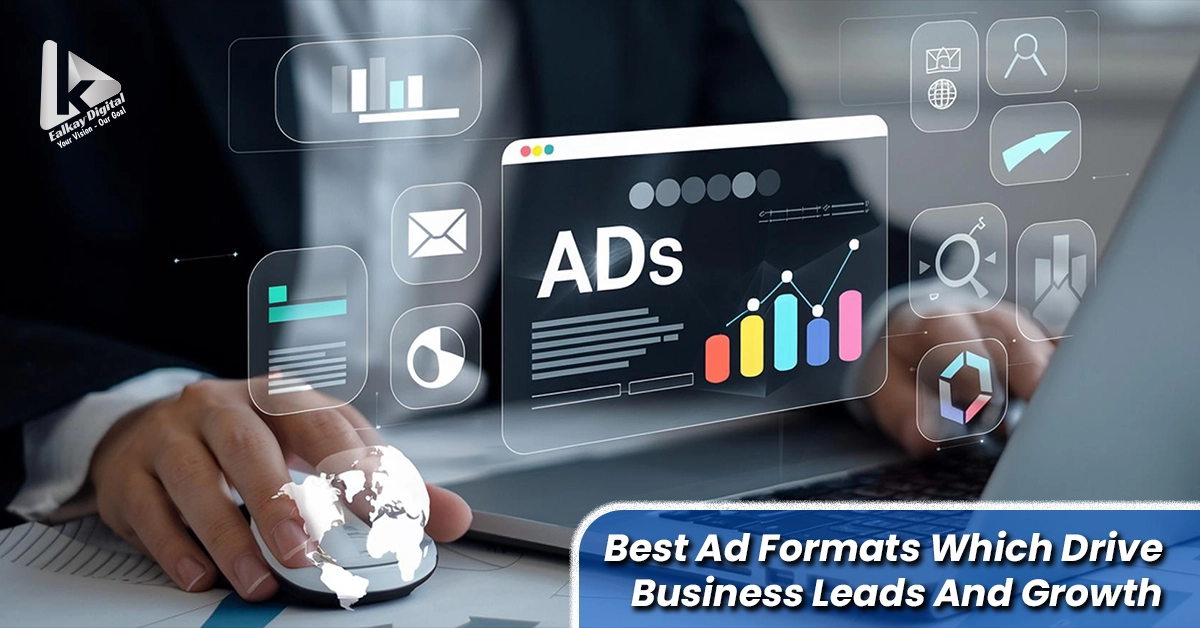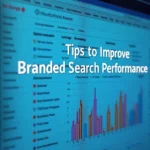
Online Ad formats Explained | Choose the best format to grow business
Introduction to Ad Formats
The best online ad formats include display ads, video ads, native ads, social media ads, and search ads. Each serves a unique purpose — from building awareness to driving conversions. Online advertising has transformed the way brands connect with audiences. With so many ad types available today, choosing the right one can make or break a campaign.
Display ads increase visibility, video and native ads increase engagement. The right type of format will ultimately depend on your marketing objectives, target audience and platform. The proper advertising mix for the highest ROI and Internet visibility
Understanding Online Ad Formats
Types of Online advertising formats are the digital media vehicles or creative templates to advertise a product over the internet. Whether you want to increase brand awareness, generate leads or drive conversions, knowing the right ad format can help inform smarter performance-led campaigns that achieve tangible results. Each format has its own role — whether it is to stop the thumb, elicit a click or drive sales.
Key functions include:
- Communicating brand messages visually and effectively
- Reaching target audiences across platforms
- Enhancing engagement through design and placement
- Driving measurable actions like sign-ups or purchases
Why Choosing the Right Ad Format Matters
Selecting the right ad format directly influences your CTR (Click-Through Rate), engagement levels, and conversion rates. Every format interacts differently with users — for example, video ads excel at storytelling, while display ads build brand recall.
Benefits of choosing the right ad format:
- Aligns visuals with marketing objectives
- Increases audience engagement and relevance
- Improves cost efficiency and ad ROI
- Strengthens brand recognition across channels
Top Online Ad Format Types You Should Know
1. Display Ads
Display ads are image-based ads on websites, apps and social media platforms in areas like banners, sidebars or pop-ups. They are a way for brands to stay visible and gain recognition. Display ads are image, text or animated content that captures the user’s attention and sends them to a landing page.
Advantages:
- High reach and brand exposure
- Cost-effective for awareness campaigns
- Easy to track and measure performance
2. Video Ads
Video ads are some of the most highly engaging ad formats online. They use visuals, sound and storytelling to grab user attention on platforms like YouTube, Instagram and TikTok. Brands adopt them for product demos, storytelling or promotions.
Advantages:
- High engagement and retention
- Ideal for mobile-first audiences
- Drives emotional connection and brand recall
3. Native Ads
Native ads naturally integrate with websites or platforms, making them less interruptive than traditional ads. They fit the aesthetics and style of their environment, adding to user trust and interaction.
Advantages:
- Higher click-through and conversion rates
- Better user experience with non-disruptive design
- Works effectively for content marketing and storytelling
4. Social Media Ads
Social ads are customized advertisements that appear on platforms like Facebook, Instagram, LinkedIn, and X (Twitter). These ads are highly targeted, allowing brands to reach specific demographics, behaviors, and interests.
Advantages:
- Precision audience targeting
- Multiple creative formats (carousel, reels, stories)
- Strong performance tracking with analytics
5. Search Ads (PPC Ads)
Search ads, often called Pay-Per-Click (PPC) ads, appear at the top of search engine results when users search for specific keywords. These text-based ads are performance-driven and ideal for high-intent searches.
Advantages:
- Instant visibility on Google and Bing
- High conversion potential
- Clear keyword targeting and measurable ROI
6. Shopping Ads
Shopping ads showcase products directly in search results with images, prices, and store names. Commonly seen in Google Shopping, they’re perfect for eCommerce businesses.
Advantages:
- Visual display of product listings
- High purchase intent traffic
- Increases sales and visibility for online stores
7. Email Ads
Email ads use targeted email campaigns to reach audiences directly in their inboxes. They can promote products, announce offers, or nurture leads with personalized content.
Advantages:
- Direct and personalized communication
- High ROI when targeted correctly
- Builds long-term customer relationships
How to Choose the Best Ad Format for Your Brand
Choosing the best format depends on your campaign goal, audience behavior, and platform.
Here’s a quick guide:
- For Awareness: Use display, video, and social ads to boost brand visibility and reach new audiences.
- For Engagement: Leverage native, interactive, and video storytelling ads to capture attention and drive interaction.
- For Conversions: Run search, shopping, and retargeting ads to attract high-intent users and increase sales.
- For Retention: Use email ads and loyalty campaigns to nurture existing customers and build long-term relationships.
H2: Key Metrics to Measure Ad Performance
Monitoring performance helps improve ROI and understand audience behavior.
Important ad metrics:
- CTR (Click-Through Rate): Measures how many people clicked your ad after seeing it, indicating how engaging and relevant your ad is to the audience.
- CPC (Cost Per Click): Shows the amount you pay for each click on your ad, helping assess cost efficiency and budget performance.
- CPM (Cost Per Thousand Impressions): Represents the cost of showing your ad 1,000 times, used to measure reach and visibility.
- Conversion Rate: Tracks the percentage of users who completed a desired action (like purchase or signup) after clicking your ad.
- ROAS (Return on Ad Spend): Calculates the revenue earned for every dollar spent on ads, showing overall campaign profitability.
The Future of Digital Ad Formats
The new frontier of advertising is turning AI powered and personalized. Now, emerging technologies such as interactive ads, shoppable videos, and immersive AR ads are rewriting the rules for how audiences interact with content. AI powers brands to serve more targeted and dynamic ads that enhance user experience and deliver maximal impact.
Emerging formats:
- AI-powered dynamic ads
- AR/VR immersive ads
- Interactive and gamified ad experiences
Conclusion
The trick to finding the right online ad formats isn’t simply using all of them – it’s about strategically leveraging the best combination. Each format serves a distinct purpose in your funnel — from awareness to conversion. A savvy marketer studies the audience data, goals and performance metrics to form a well-rounded ad strategy.
In the attention economy today, the right format isn’t simply seen — it’s remembered. The secret to converting clicks into customers is mastering your mix.
FAQs
1: What are the most popular online ad formats today?
The most popular formats include display ads, video ads, native ads, search ads, and social media ads due to their reach and engagement.
2: Which ad format gives the highest ROI?
Search ads and shopping ads often provide the best ROI because they target users with high purchase intent.
3: What’s the best Ad format for brand awareness?
Video and display ads are best for awareness campaigns as they grab attention quickly and create lasting impressions.
4: Are native ads more effective than display ads?
Yes, native ads tend to perform better since they blend naturally with content, leading to higher engagement and trust.
5: How is AI changing online ad formats?
AI personalizes ad delivery, automates targeting, and enables dynamic creatives — helping brands reach the right audience at the right time.




